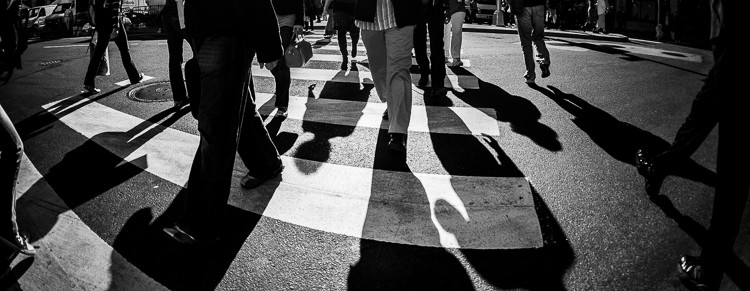In this article, I’m going to explain back button focus and why you should consider learning how to use it. Using back button focus can help you get sharper images in certain really tricky shooting situations such as:
- Night and low light photography
- Sports and other fast-moving subjects (pets, toddlers)
- Portraits
- Still life photos (products, food, etc.)
What is back button focus?
Back button focus is basically a custom way of setting up how the buttons on your camera function. Usually the shutter button initiates the autofocus (when you press it half-way) and takes the photo when you press it fully.
With back button focus, you separate the two functions (focus and shooting) so they are controlled by different buttons. Usually, that means setting a button on the back of the camera to initiate autofocus and the shutter button then just takes the photo.
Why use back button focus?
At this point you may be wondering, “Okay, but why on earth would I want to do that?!”. Or perhaps you’ve heard this term before and aren’t really sure what it is all about or when to use it. Allow me to explain.
There are several reasons why you’d want to do this but I’ll describe two common scenarios where it’s really useful.
#1 – Photography sports or fast moving subjects
While you might not be a professional sports photographer, you likely have pets, kids, grandkids, or the occasion to photograph other fast-moving subjects. The challenge with a moving target is that when you use the recommended focus settings for that kind of situation (CLICK HERE to read more on that) and you set your camera to Continuous Focus mode (tracking focus) there is an issue that will limit your success.
When you are using the shutter button to both initiate focus and take the photo it can only do one of those things at a time. When you hold it halfway down you are focus tracking focus as the subject runs toward you. But as soon as you press the shutter button all the way down, the camera stops focusing and starts taking photos.
So you may get a few sharp images, but as the subject continuous moving they will eventually be out of focus.
By using back-button focus now you’re using your thumb on a different button to initiate and continue focusing, while your index finger presses the shutter. So both things happen simultaneously. Doing so will give you a higher success rate for moving subjects (make sure you use continuous or high-speed drive mode too).

#2 – Stationary subjects
If you’ve ever used the “focus and recompose” method of shooting then you’ll love this benefit! When you are in single or one-shot focus mode and you press the shutter halfway down and hold it, the camera will lock focus on your subject. You can then recompose or arrange your composition as you like, and depress the button fully.
But if you want to take more images with various different compositions, you have to do that every single time. If you are photographing an object that isn’t moving, or doing a portrait where the subject is sitting in one spot – this is a lot of extra work.
When you switch to back button focus, you just press the designated button on the back of the camera using your right thumb. Then once you let go of that button, focus is locked and stays there until you press the button again. So you’re free to shoot away and make as many composition changes as you like as long as you and the subject haven’t moved.

NOTE: This is essential for doing night photography, especially things like light painting, where you’re literally shooting in the dark. You simply illuminate the subject and use the back button to lock focus on it. Assuming you’re using a tripod and the subject isn’t moving – you’re all set until you move the tripod.
Dangers to watch out for
There are two main drawbacks of using back button focus but if you can overcome these you’ll never go back.
I’ve shown many of my students in my workshops and tours how to switch over to using back button focus. Usually, when I run into them again at another class or event and ask them about it – a common answer I get is that it was a game-changer and most of them are still shooting that way.
#1 – Forgetting to focus
Anytime you do something new it will take some time to get used to and remember. So, if you switch your camera to back button focus, expect to get a few completely out of focus images. You’ll forget to use the back button frequently when you first try this – so I recommend that you go out and practice taking photos this way on something that’s not overly important.
Find some flowers in your yard, or just take a walk and take photos of anything and everything. Just practice using the back button. Get to where you can do it automatically without thinking about it and it feels more natural.
#2 – Handing your camera to someone else to use
If you ever want to be in the photo and you decide to hand your camera to someone else – make sure you disable the back button focus. I find it’s just too complicated to explain. Unless they are a photographer too and they use it – don’t expect them to get it right.

So just quickly change it back so the shutter button is active for focusing. I usually make it zone focus as well so they don’t have to get one single point on the right spot. Trust me on this – I have a LOT of out of focus images of myself that were taken by other people. I know of what I speak here!
How to set up your camera for back button focus
The actual method of how to set up back button focus is drastically different from one camera manufacturer to another, sometimes from one model to the next as well. So, you really need to know your camera and dig out the user manual to figure this out.
I did find a few videos on setting up different cameras that might be helpful.
Setting up a Canon DSLR for back button focus
To see how to set up a Canon DSLR for back button focus, watch the following video:
If you have one of the new Canon mirrorless cameras like the R5 or R6 CLICK HERE.
Setting up a Nikon DSLR for back button focus
To see how to set up a Nikon DSLR for back button focus, watch the following video:
That’s the shortest and simplest Nikon setup video I could find. Here’s another that goes into a bit more detail on setting a couple of different Nikon bodies.
If you have a D3400 or similar model CLICK HERE if the videos above or below don’t help you.
Setting up a Fuji camera for back button focus
One of the things I love about my Fuji mirrorless cameras is how easy it is to get into back button mode. If you shoot Fuji and want to use Single focus mode (S on the front dial) all you have to do it turn that switch to M for manual focus. Then the AF-L button on the back of the camera is automatically activated for autofocus.
If it’s not set up that way by default or you’ve changed it, OR you want to use continuous focus along with back button – watch the video below. He does a great job of explaining how to set up the camera to do this.
Setting up a Sony camera for back button focus
If you have a Sony Alpha model camera body, watch the video below for how to set up your camera. If you use a Sony A7iii or similar model CLICK HERE and see if that one helps you more.
If your camera doesn’t match one of these just go to YouTube and search for “How to set up a [camera make and model] for back button focus”. Just replace the search with your actual camera make and model.
Conclusion
If you haven’t tried back button focus before, I urge you to give it a go. It’s a camera customization that can help you to take your photography and your skills to the next lever.
Let me know in the comment area below if you already shoot using back button focus how you like it. If you are new to using it, tell me how it’s changed the way you shoot and if you enjoy it.
Cheers,